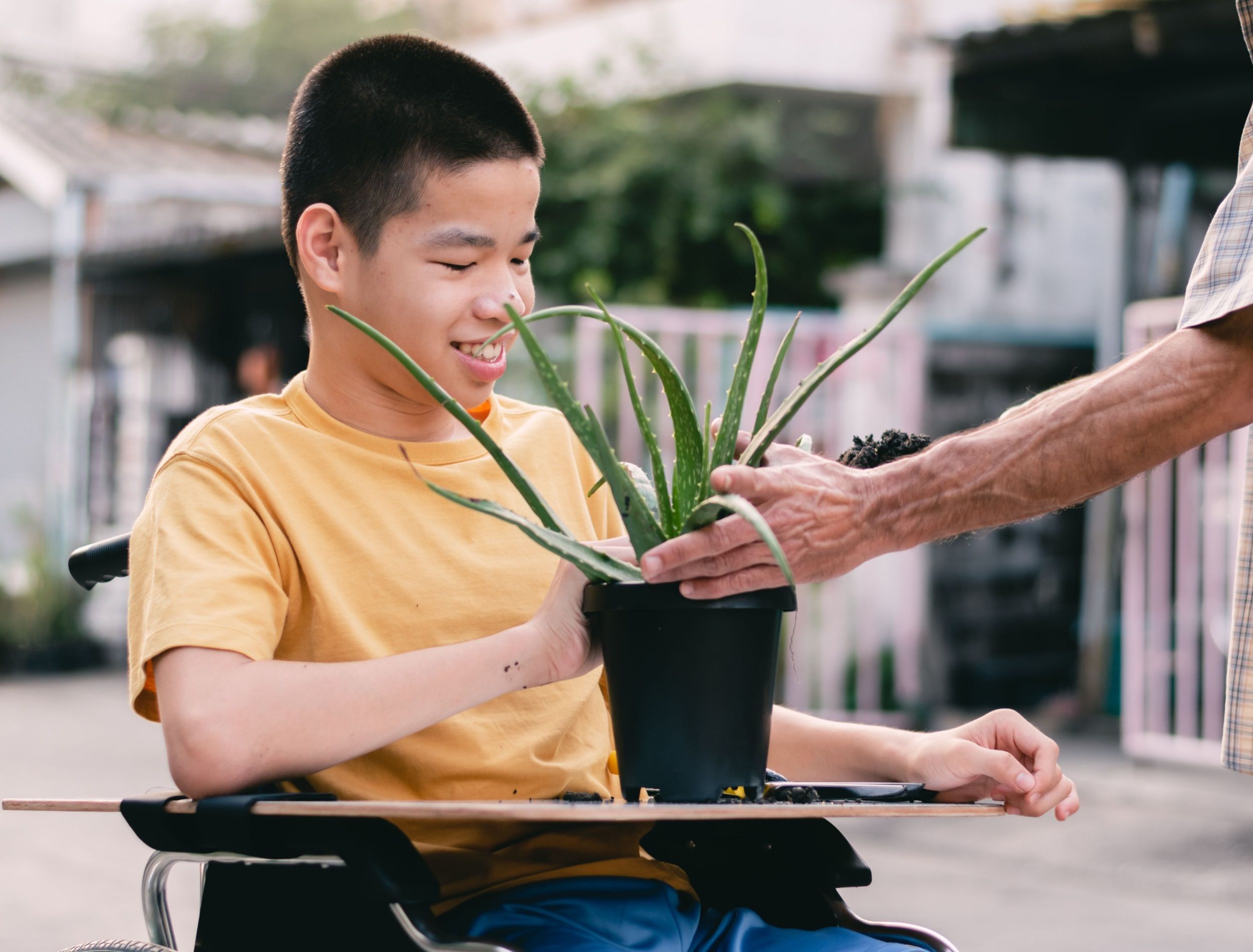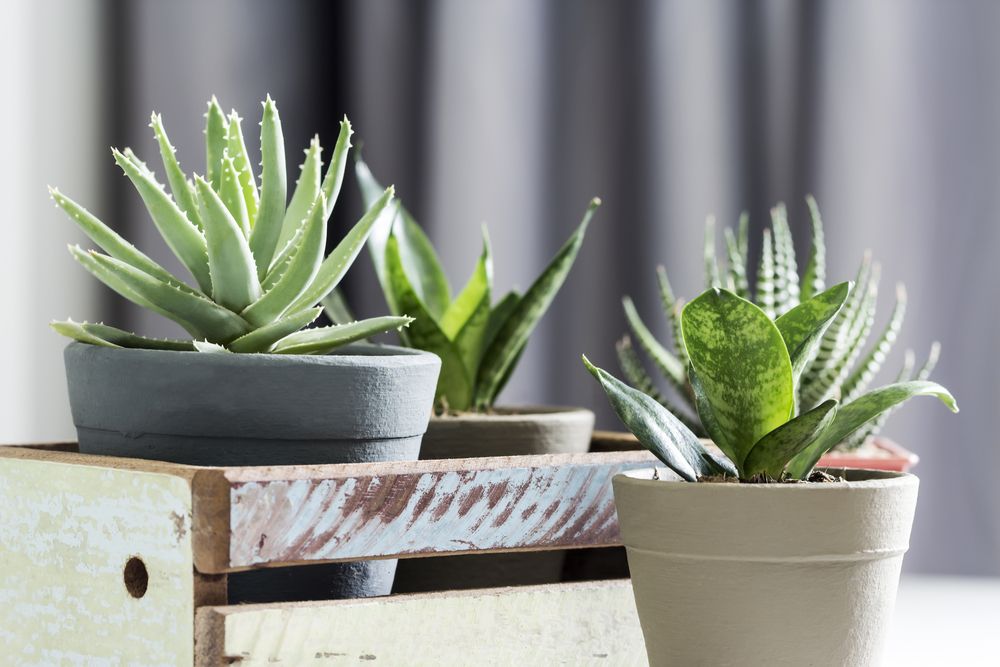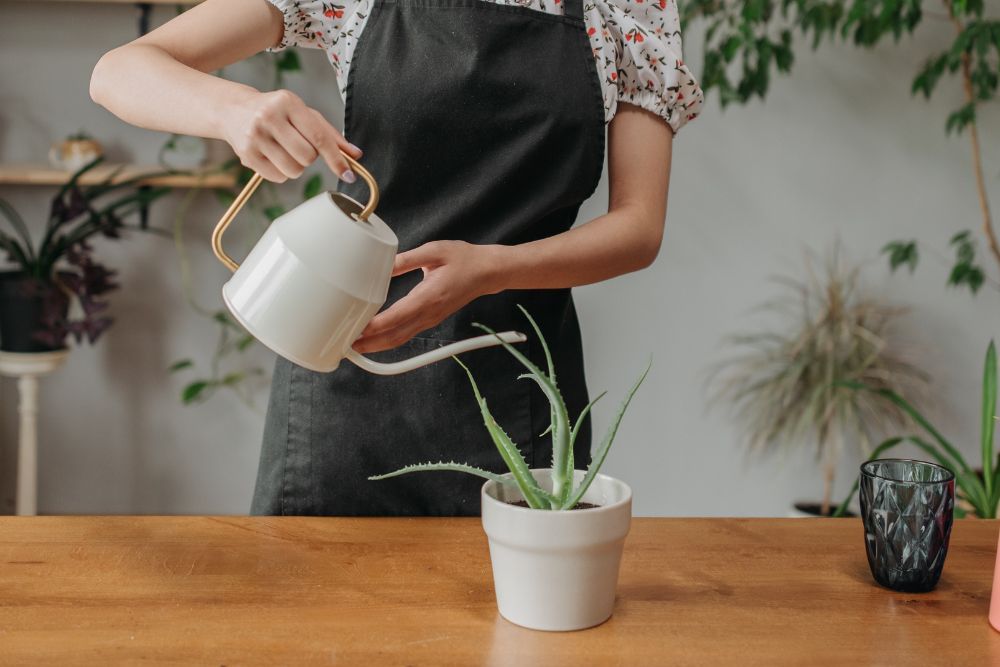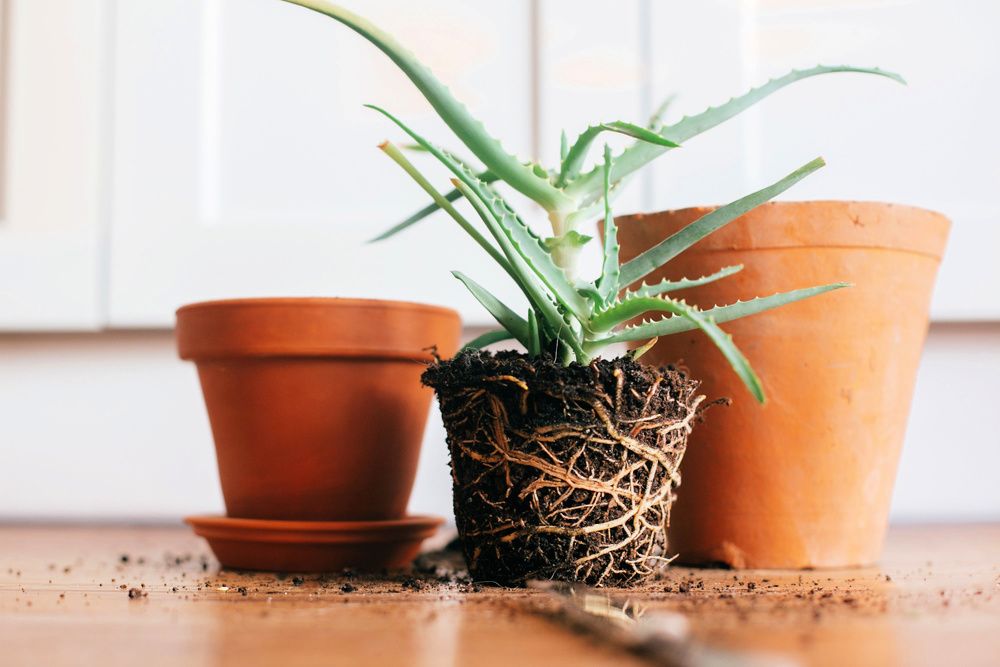Aloe is a simple yet popular houseplant with a variety of benefits. Not only does growing this plant look stunning in your living space, but you can also grow aloe for its medicinal purposes as well. Aloe vera plants have thick, spiky leaves which contain a natural, jelly pain reliever often applied to the skin to soothe wounds -- from cuts and scrapes to sunburns. What else could you want in a houseplant!
In this guide, discover five tips to help you successfully grow an aloe plant at home. Learn about the ideal growing conditions for your plant, how often to water, what type of fertilizer to use, and more.
1. Keep in a Bright Location
Image credits: Zuzha via Shutterstock via Shutterstock
Aloe plants need plenty of bright indirect sunlight when growing indoors. The best location is a south or west-facing window, away from any drafts. If you don't give this plant enough sunlight, it tends to experience stretching or leggy growth. Too much sunlight can also cause yellowing of the foliage. To prevent this, place your plant in a location that will receive at least six hours of filtered light each day.
Aloe likes temperatures ranging from 55 to 80 degrees Fahrenheit. Temperatures below 50 degrees Fahrenheit will damage and cause stress to the plant. During the spring and summer months, you can move your aloe plant outdoors to continue growing -- just remember to bring it back indoors before it gets too cold.
Pro Tip: Make sure to rotate your aloe plant regularly to ensure it is getting enough sunlight from all angles.
2. Properly Water Your Aloe Plant
Image credits: Rocketmann Team via Pexels
One of the main reasons aloe plants die is due to improper watering. You don't need to water this type of plant very often. In fact, it's better to water thoroughly but less often. This is because aloe is drought-tolerant and is classified as a succulent. Succulents can often go for long periods without water, as they easily store it in their leaves.
During the spring and summer, water once every two to three weeks. Whereas in the fall and winter months, you'll want to water even less than that -- once every three to four weeks is ideal. Always check the soil to ensure your plant needs water. The top few inches should be dry to the touch before you go ahead and water again.
Be aware of the signs of overwatering and underwatering. If you over water your aloe you put it at risk of discoloring, mushy foliage and possibly root rot. When you underwater your plant, you'll see browning tips.
3. Use the Right Type of Soil
Image credits: Bogdan Sonjachnyj via Shutterstock
Aloe plants grow best in a container with well-draining soil. The ideal type of soil to use is a mix that is specifically for cacti or succulents or a high-quality potting mix that contains sand. You can also make your own soil mix by combining 2 parts potting soil, 2 parts of coarse sand, and 1 part pumice or perlite. Avoid using garden soil as this will be too heavy for growing aloe indoors.
Use a container or pot that has proper drainage holes. This ensures that water doesn't build up in the bottom of the container causing soggy, wet soil. Aloe doesn't like to sit in water. So, when watering your plant, always allow the excess water to drain from the bottom of the container.
4. Repot Offsets or Pups
Image credits: Alexey Demidov via Pexels
Mature aloe plants will start to produce offsets at the base of the plant, also commonly referred to as pups or babies. You can easily propagate your plant by removing and planting these in a new container. This encourages the plant to keep growing, while also giving you multiple aloe plants in your home!
Start by dividing the pups from the main plant. Use a sharp pair of disinfected pruning shears and trim a piece leaving at least 1 inch of the stem intact. From there, allow the pups to dry for a few days and callus over where it was cut. This ensures that your cuttings don't rot once you plant them in soil.
After a few days, plant your pups in a container with drainage holes and place them in a bright location. Keep the soil somewhat dry and wait to water until at least a week has gone by.
5. Fertilize Your Aloe Plant
Image credits: Alexey Demidov via Pexels
Aloe plants require fertilizing, but not very frequently. Fertilize your plants about once a month during the spring and summer when the plant is actively growing. But you should hold off on adding nutrients during the fall and winter months. It's especially important to fertilize aloe at the beginning of spring before new growth occurs.
Use a balanced fertilizer designed for houseplants and follow the package directions on how much to apply. It's recommended to dilute your fertilizer to half-strength for aloe plants. These plants are low-maintenance and prefer to have fewer nutrients rather than more.
Keep Your Aloe Plants Thriving!
With these basic tips and care guidelines, your aloe plant is sure to thrive indoors. Whether you plan to use it for its all-natural healing properties, or simply to add a decorative touch to your home -- the rewards of growing aloe are endless!
Do you have any tips on growing aloe plants? Leave a comment down below and share your experience.





